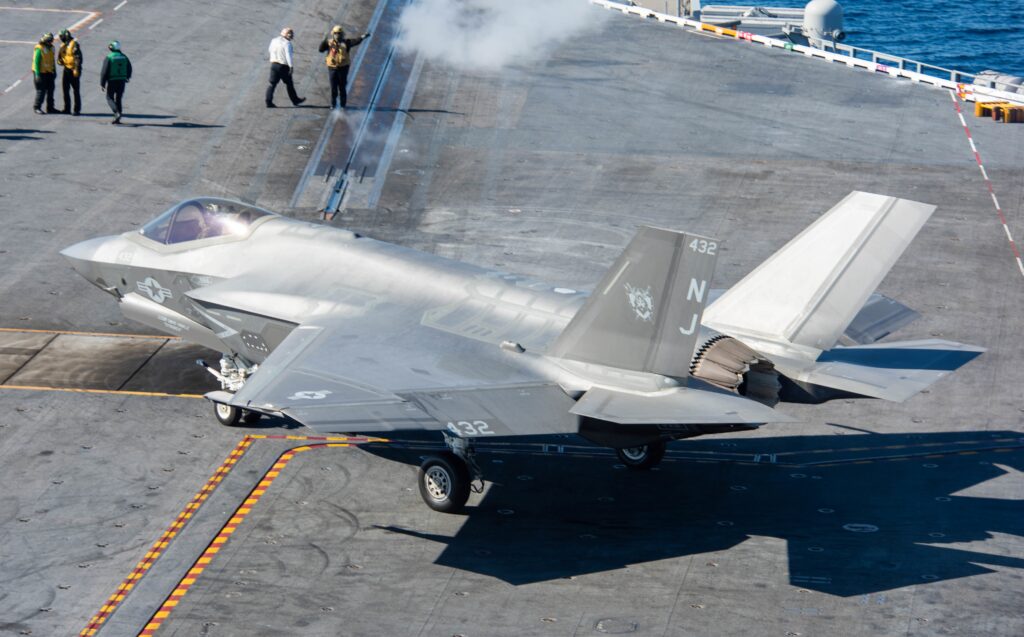
**************
ARLINGTON, Va. — The Navy Department is requesting funds for nine battle force ships and 88 aircraft in its fiscal 2024 budget proposal. The service also plans to decommission 11 battle force ships, some before the expiration of their service life.
The 2024 request at $255.8 billion represents an $11.1 billion or 4.5% increase over the 2023 budget enacted by Congress, according to Undersecretary of the Navy Eric Raven and Rear Adm. John Gumbleton, deputy secretary of the Navy for Budget, briefing reporters March 13 at the Pentagon.
Ships
The nine ships in the $32.8 billion ship construction request include one Columbia-class ballistic-missile submarine (SSBN), two Block V Virginia-class attack submarines (and advance funding for four more), two Flight III Arleigh Burke-class guided-missile destroyers, two Constellation-class guided-missile frigates, one John Lewis-class fleet replenishment oiler, and one new-design submarine tender.
Ship construction funding includes $5.8 billion for the first and second increments of the second Columbia-class, Wisconsin (SSBN 827). Funding also is requested for the Ford-class aircraft carrier program: the seventh increment for the third, Enterprise (CVN 80), and the sixth increment for the Dorie Miller (CVN 81).
The budget allocates $1.8 billion for the final increment of the Fallujah (LHA 9), the fourth America-class amphibious assault ship.
Of note, no funding is provided for any more Flight II San Antonio-class landing platform dock ships throughout the Future Years Defense Plan. Procurement of the new medium landing ship is planned for fiscal 2025 and the next-generation logistic ship is planned for 2027.
The proposed budget also funds the procurement of two LCU 1700-class utility landing craft; two used ships for conversion to sealift ships; and the service-life extension of one air-cushion landing craft (LCAC). Procurement of the LCAC 100-class ship-to-shore connector is gapped for 2024, with resumption planned for 2025.
Procurement of the Large Unmanned Surface Vessel and the Orca Extra-Large Unmanned Undersea Vehicle are funded for 2025 and 2026, respectively.
The Navy plans to retire 11 ships, including eight which would be retired before the normal end-of service life. The ships to be retired include: one Los Angeles-class attack submarine, five Ticonderoga-class guided-missile cruisers, two Independence-class littoral combat ships, and three dock landing ships.
Under the 2024 plan, the Navy’s battle force would decline by one ship to 293 ships.
Aircraft
The budget proposal included $17.3 billion for the procurement of 88 aircraft for the Navy and Marine Corps. This includes 16 F-35B and 19 F-35C Lightning IIs; 26 T-54A multi-engine training aircraft; two KC-130J Super Hercules tanker/transports; 15 CH-53K King Stallion heavy-lift helicopters; five MQ-9A Reaper unmanned aerial vehicles (UAVs); two MQ-4C Triton UAVs; and three MQ-25A Stingray UAVs.
Gumbleton said this budget request completes the procurement of the KC-130J (at 88 aircraft); the MQ-4C (at 22 aircraft), and MQ-9A (at 18 aircraft). The Navy’s stated requirement was for 68 MQ-4Cs, so this truncation represents a change in direction. The Navy Air Reserve has an unfunded requirement for 32 C-130J transports.
As expected, the Navy has not requested any F/A-18E/F Super Hornet strike fighters. It remains to be seen if Congress will again fund more Super Hornets out of concern for the Navy’s strike fighter shortfall.
The 2024 plan would leave the Navy and Marine Corps aircraft fleet at 3,998 aircraft, slightly under the 2023 total of 4,012.
Marine Corps Vehicles
The Marine Corps plans to procure 80 personnel variants of the Amphibious Combat Vehicle and 396 Joint Light Tactical Vehicles in 2024. The Navy/Marine Corps Expeditionary Ship Interdiction System (NMESIS) and Long Range Fires (LRF) programs would continue development and testing of the Remotely Operated Ground Unit Expeditionary (ROGUE) Fires vehicle, an “unmanned ground vehicle based on a Joint Light Tactical Vehicle (JLTV) chassis mounting a missile launcher system,” the Navy’s budget briefing book said. The 2024 budget souls continue procurement of NMESIS systems as well as funding for 90 Naval Strike Missiles and, for the LRF, 34 Tactical Tomahawk missiles.
- SECNAV: Frigate Delay Due to ‘Atrocious’ Shipyard Worker Retention - May 16, 2024
- SAIC Advances Scalable Open-Architecture Counter-UAS Systems - May 9, 2024
- Navy’s Triton UAV to Provide Targeting for LRASM - May 2, 2024



